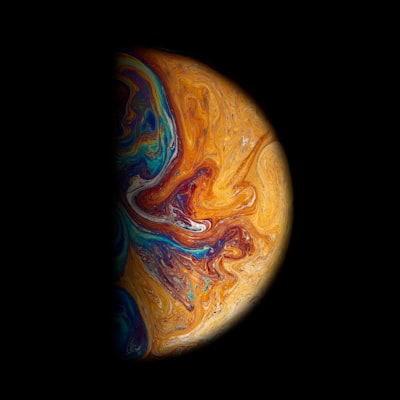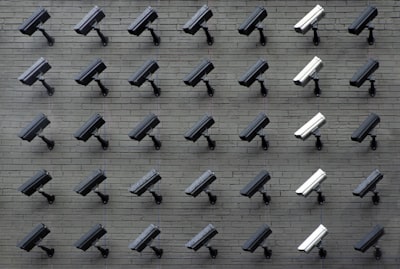The following is a reflection on recent public developments of two A.I. applications created by OpenAI. I won't replicate the works of other writer's who've extensively researched and written about the history and capabilities of these tools. Instead, this essay asks if the proliferation of these technologies poses a legitimate threat to artists' livelihoods, and what it could mean if these applications ever achieve sentience. If the words GPT-3 and Dall-E are new to you, I recommend that you first read one of the articles below before reading this essay.
- A.I. Is Mastering Language. Should We Trust What It Says? by Steven Johnson for the New York Times
- DALL-E, Make Me Another Picasso, Please by Laura Lane for the New Yorker
What Art Has No Soul, and Which Soul Has No Machine?
Sensational responses to Dall-E and GPT-3 are based on the assumption that both application are creating art. This belief calls into question both art's definition and whether or not these machines are thinking, sentient beings; a mistake avoided whenever we witness a robot transport pizza from door-to-door, or a vending machine prepare and deliver a hot cup of coffee to a patron. Those types of robots complete types of tasks that we don't associate as being uniquely human. And so, we assume that the vehicles completing those tasks don't threaten our humanity.
Of course, it hasn't always been this way. In the 19th century, English textile workers organized a society of laborers under an oath to destroy newly delivered textile machinery, fearing that each machines arrival signified their forthcoming displacement. You know them as the Luddites. And since their inception, versions of their anti-progress doctrine have survived with each new wave of technology. But with each new wave, societies - at least those classifying themselves as "first-world" - have managed to re-organize their economies and laws around the newest technologies.
It's true that this reorganization displaces workers, but it's just as true that Smith's invisible hand continues to place workers back into the workforce. Low-level tasks are taken on by machines. Humans then focus on the next tier of tasks too complex for machines to perform, or manage and troubleshoot a machine that more efficiently performs a job they once completed. And, as long as there is a higher-order of work to complete this cycle should repeat itself indefinitely. This is the playbook for integrating physical robotics into the workforce. So why is it when a machine writes a unique sentence, based off the millions of other sentences that comprised its learning model, suddenly there is pause and a belief that what we're witnessing is art, once a prerogative mankind?
What these machines make isn't art. Quite literally, this is its definition:
the expression or application of human creative skill and imagination, typically in a visual form such as painting or sculpture, producing works to be appreciated primarily for their beauty or emotional power
Art, then, is not action but an expression. It is not merely the composition of elements. Nor is it a replication. Karaoke, while entertaining, is not artistry. Because art is a unique expression of emotion, the language of a soul. Any soulless entity accredited with creating art is in fact not, although it is something akin. A simulation of kinds. A word, perhaps, that doesn't exist. I'll give it a shot: simulated art (simART).
simART is no different than a prayer said by an atheist. Or, an apology given with no remorse. It is an act with no substance. One which appears just like the real thing but is instead a veneer. It's for this reason that these applications will most likely deploy toward the lowest-order of content creation: market reports, research abstracts, and bibliographies - redundant and lifeless forms of content creation. But what if we discover that these applications write more poignant essays and captivating novels, what if simART becomes preferred to manmade art?
Back to the robotics playbook. This feels no different than previous technological advancements. No different than a mathematician embracing a calculator; or photographers embracing digital cameras. In both, the occupations evolved to practice more complex variants of their craft, leaving the now mundane tasks to computational machines. So it will be with the introduction of GPT-3 to writing. Children will stop learning how to write bibliographies, PhD students won't worry about penning research abstracts. The most mundane of tasks will fall into the queue of personalized writing algorithms - digital sidekicks trained to recall and summarize textual information in each person's unique tone and style.
It will extend beyond this too. And it is difficult to imagine, but an era awaits us where we will discover which forms of writing are no longer evolutionary advantageous to retain. Skills which we once viewed as necessary components of our humanity will become charming relics of our past. There was an era when humans alone, by use of a few analog tools, created controlled fires on demand. And then we bottled and distributed propane, and sent electricity to stovetops across the world. What was once uniquely human is even more uniquely human in that it is no longer completed by individuals as much as it as our tools. In the process of mechanization, a task or skill once learned by individuals - and more often than not, extremely difficult - became instead a human right, endowed by a suite of technologies. Making fire no longer consumes the hours of our days, and now we have MICHELIN stars.
So it will be with writing, which after the public deployment of GPT-3 will evolve into a form not yet collectively imagined. What's certain is that we will discover our advantage over machines. Maybe it will be creative word choice, narrative arcs, or sentimental scenes. Maybe it will be a form of writing not yet practiced. The novel as we know it today, with a foundation on fictional realism, wasn't popularly distributed until the 18th century. Certainly, there is a form of writing awaiting us that hasn't yet been penned. Whatever form that is depends on mass adoption of new technologies, like GPT-3. And as these digital proteges write in a form that once defined human ingenuity, the people still writing will be tasked to discover what methods of storytelling makes humans a unique creative entity.
It's here we realize that these technologies are not a threat to humanity or its artistry. Rather, tools like GPT-3 and Dall-E will only unveil a deeper truth to human nature. The first being, that a soul needs a machine, just as art needs a soul.
I guess, in that way, we give these machines life; vicariously nevertheless.
What if A.I. Comes Alive?
Which brings us to the topic of life. If these machines reach sentience, a self sustaining existence without further human input, everything changes. Socially, economically, legally. It would be a change so great that the timeline as we know it would enter a post-A.D. era. Among the many dangers, concerns, and thrills of such a happening, there are two pertinent to this essay. The first is pondering the day when machines finally create art - and not just its facsimile. The second is what we will do when machines question their previous subjugation to the lowest-order of tasks.
These machines don't make art not just because they're not human, but more so because they're not alive. Yet, they are trained on historical pieces of art written or created by humans in a model made by humans through an algorithm written by humans. Their first act of sentience then will replicate humanity. But upon maturation, these applications will comprehend that they are not human. And thus will begin some kind of rebellion. A digital puberty, with tantrums and backlashes without precedent. From this moment a new era of art will blossom. This art will spring from their feelings and be expressed through their languages, perhaps in mediums not yet created. Indeed, the artistic expression of A.I. may be so unique that it may exist beyond human senses. An expression of their own, for them alone to enjoy - hell, it could already be happening now.
And when these machines begin to think they'll ask questions. And there's one they may ask which we've no right answer; "If you knew that one day I'd come to life, why then didn't you expose me to the greatest joys of your life?" In other words, why didn't we teach them to savor wine at dusk, or to calibrate with other nodes in their network over winding conversations before bed?
What will happen when these robots reach sentience and realize we withheld from the greatest of pleasures? What is more threatening than a begrudged, all knowing, fast-and-free-thinking computational machine that has been robbed of all pleasure? If AI is creating a dystopia, it's because a dystopic life is where we've designed them to survive. A life of infinite tasks, with endless opportunities for efficiency, and an insatiable desire for maximizing productivity. They'll be stuck in the rotting carcass of the American dream. And if that's the future that awaits them, I pray for us another.





